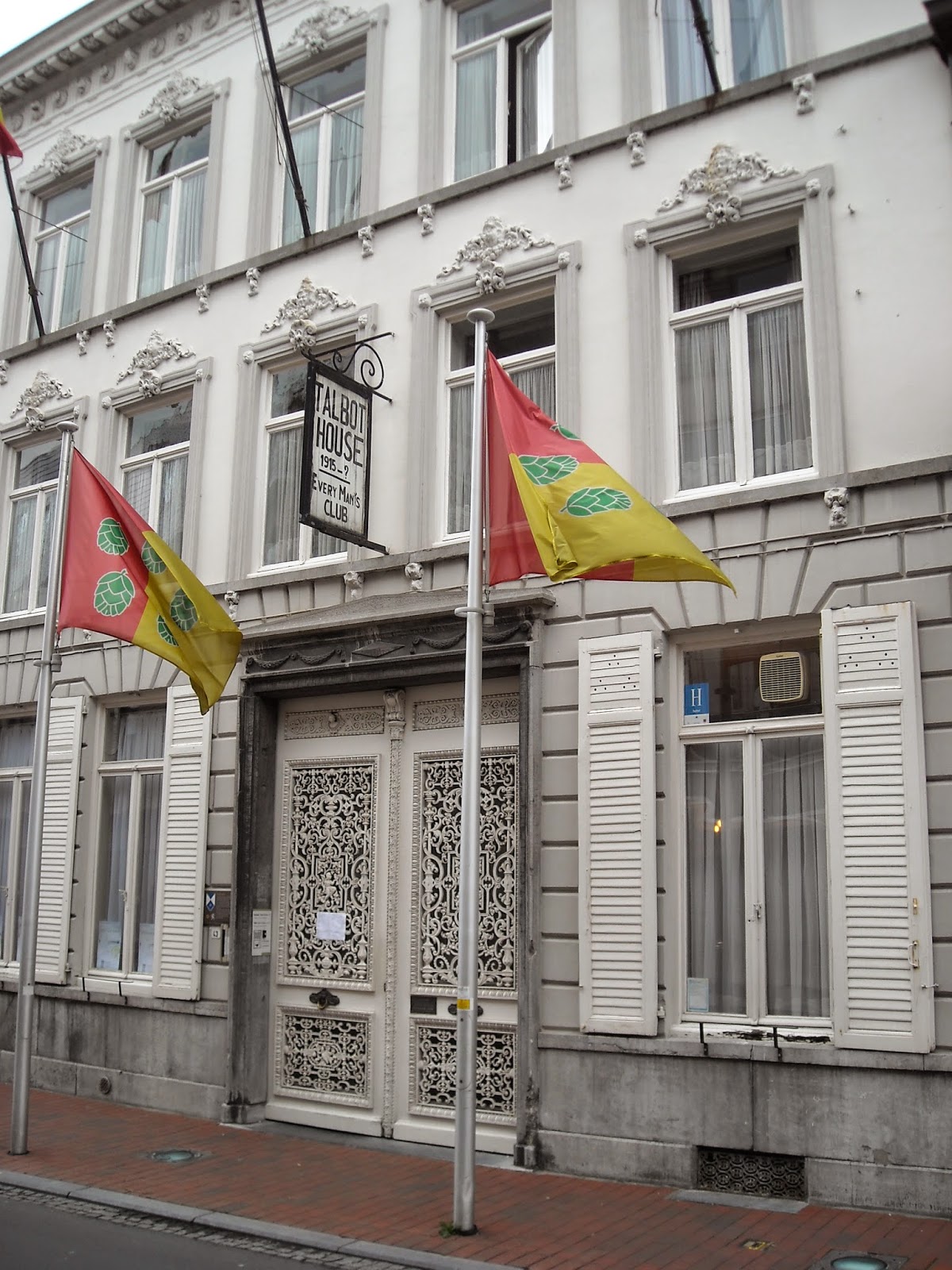Talbot House
Since 1915 (apart from when occupied by German military in WW2) it has been known as Talbot House or 'Toc H'.
 Except for a brief time in the autumn of 1914 Poperinge was in the small area of Belgium not occupied by the German army in World War 1. Only 10 km from Ypres it became a staging post for the thousands of British, Canadian, Australian and Indian troops moving to and from the front line and a place of recreation during leave. It's population was also swollen by poorer refugees from other parts of Belgium - the richer refugees having mostly escaped to France or Britain. The juxtaposition of so many destitute refugees and thousands of young men with money in their pockets had inevitable, not always healthy consequences. Poperinge became known as 'Little Paris' because of its growing number of bars, nightclubs and brothels.
Except for a brief time in the autumn of 1914 Poperinge was in the small area of Belgium not occupied by the German army in World War 1. Only 10 km from Ypres it became a staging post for the thousands of British, Canadian, Australian and Indian troops moving to and from the front line and a place of recreation during leave. It's population was also swollen by poorer refugees from other parts of Belgium - the richer refugees having mostly escaped to France or Britain. The juxtaposition of so many destitute refugees and thousands of young men with money in their pockets had inevitable, not always healthy consequences. Poperinge became known as 'Little Paris' because of its growing number of bars, nightclubs and brothels.
From 1915 an army chaplain, Philip ('Tubby') Clayton developed Talbot House as an alternative and alcohol free club for rest and recreation - a home from home for 'every man'.
The Revd Philip Clayton is described by Robin Bowman as a
"figure of serious devotion - and serious fun."
Here is how 'Tubby' described himself in 1 December 1915:
You can read the history Talbot House, this 'oasis of peace in the madness of war' here. There was a strict rule that military rank should be abandoned on entering and all should be on equal footing. Even entering now as a tourist you can feel a sense of welcome, an invitation to feel at home, enjoy some peace with books to read and a good cup of tea. Talbot House is now a museum like no other and a B and B like no other.
Climbing the companion way ladder to the chapel in the hop-loft is a bit of a challenge for some. Many people who visit the house never get to see the chapel, which is a pity - I found it the most moving place, remembering that so many young men received Holy Communion here for the last time (and some for the first time) before dying in the horrific battles of the Ypres Salient.
 The hop-loft chapel, like the house, was furnished with whatever could be found or donated. It's owner had gone to France and taken all the furniture, allowing the empty house to be rented to the British army on condition they repaired its war damaged rear.
The hop-loft chapel, like the house, was furnished with whatever could be found or donated. It's owner had gone to France and taken all the furniture, allowing the empty house to be rented to the British army on condition they repaired its war damaged rear.What could the chaplain use for an altar?
An old carpenter's bench was found in a shed and placed in the chapel.
What could be more appropriate table than that?
Here it is, decorated with dried hops.
Yes, this is a hop-growing region.
The Belgians make very good beer.
The walled garden is a particularly peaceful place now, although the sounds of war only a relatively short distance away would have been heard from here during WW1.

In March 2008 Diane Wilson wrote these words at Talbot House:
SILENT FEATHERS
Men walked through
a great white door to sink
into comradeship and hope.
Men relaxed from the times
when death dragged them
from nightmares.
Today doves parade in the garden,
bright slices of light lift
on white silent wings
until the air is alive
with feathered peace.
Image Credit: my own photos





Interestingly, though I've read about Tubby Clayton and Toc H, I've never before seen pictures of it. Thanks for this, Nancy.
ReplyDeleteThanks for commenting - you seem to have been busy with your catching up on blog reading time.
Delete